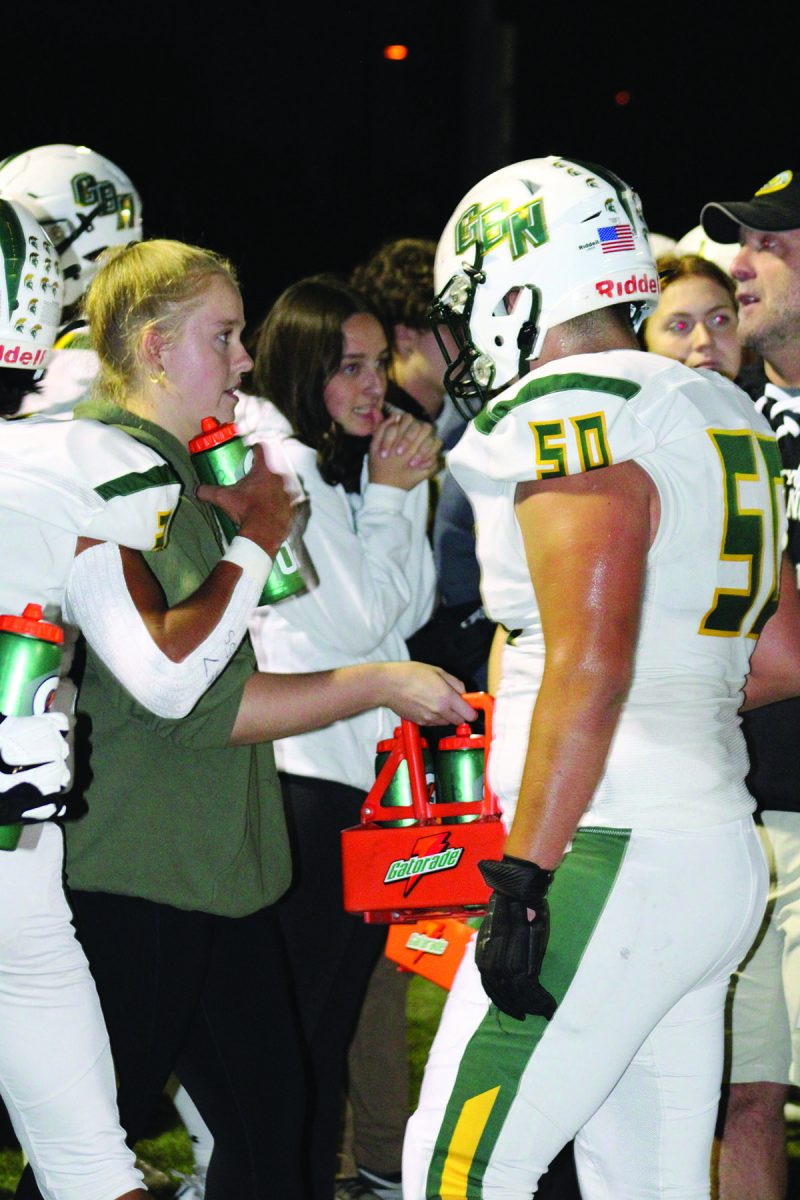During a girls lacrosse game at William Lutz Stadium, a player suffering from a head injury began to lose consciousness on the sidelines, leading student athletic trainer Olivia Stasieluk to get involved.
“While I was busy on the phone trying to get a hold of paramedics and her parents, Olivia actually stepped up and was helping out to try and keep her conscious, [trying to] get any sort of signs out of her,” assistant athletic trainer Stephanie Trybul said.
Stasieluk monitored the player for signs of consciousness, breathing and circulation until paramedics arrived. She checked that the player was getting adequate air and that her lips were not turning blue.
“It was a very serious night and probably one of the biggest things I’ve dealt with because everything happened so fast,” said Stasieluk. “And I was right there with the girl … It kind of shocked me. And that was where I had a talk with [Trybul] about it, and I was like ‘Holy cow, this just happened.’ And she’s like, ‘Yeah, this is some of the serious stuff we deal with.’”
Student athletic trainers learn how to address athletic needs. They teach stretches to avoid and address injuries, tape various body parts and use specific training room equipment. Any student may join the program after reading the handbook and completing a parental waiver. All student athletic trainers must be CPR, AED and first aid certified before stepping into their position.
“The purpose of the program is to expose our students to an environment much like … in the medical profession,” said Trybul. “So there’s going to be a lot of students that go into let’s say, PT, physical therapy, or they want to be an orthopedic doctor or something like that. This gives them some form of exposure.”
Student athletic trainers spend time in the training room and at athletic competitions.
“There’s no other program that you get the behind the scenes stuff,” said head athletic trainer Ryan Moran. “Like at football games, they’re on the sidelines with us, so they get to be a part of the chaos.”
After a boys track athlete dislocated his ankle, Stasieluk helped calm him down until EMS arrived by bringing in the common interest that they are both athletes.
As an athlete herself, Stasieluk can connect better with athletes, she said.
“I understand a dislocation, an ACL tear, any major injury … it’s the worst as an athlete,” said Stasieluk. “So I get the emotion that the athletes are going through. But as a [student athletic] trainer, I need to keep calm. I see how the trainers work with the other athletes, how calm they are and how they reassure that everything’s gonna be okay.”


